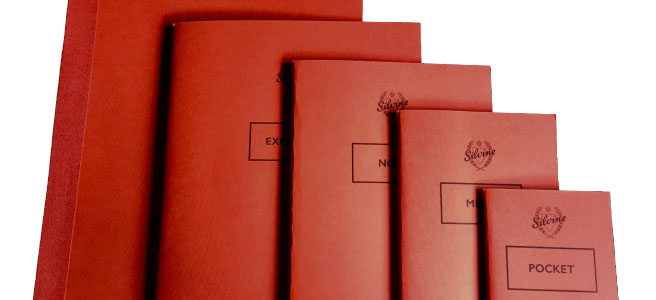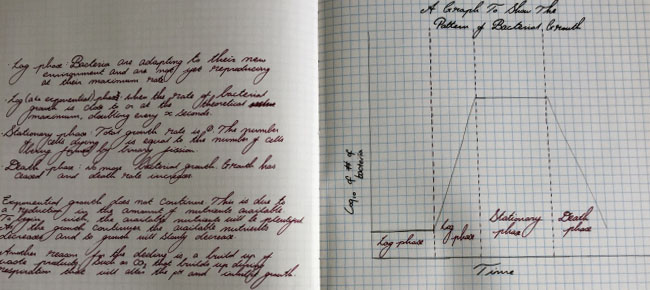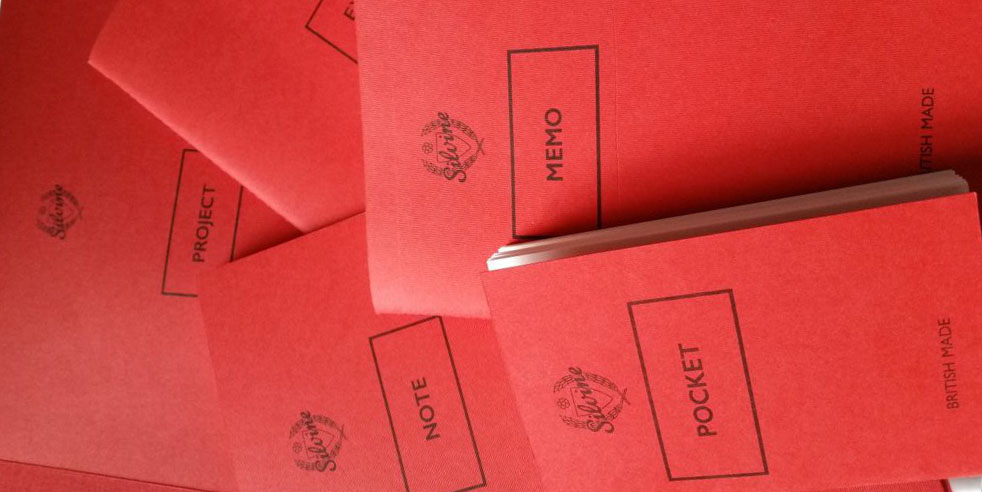A little bit of history As the twentieth century grew more confident in its own artistic milieu and Art Deco architecture collided with aeronautical design, the blended lines of ‘Streamline Moderne’ emerged. It bore all sorts of results, from Morecambe’s Midland Hotel (where everyday is like Sunday, according to Mr. Morrissey), to the passenger accommodation of The Hindenburg (itself inspiration for the Diplomat Aero), and, of course, the Airstream caravan (as slow as all other caravans but at least nicer to look at). Several decades later, Jake Lazzari of Applied Pens spotted the missing category; fountain pens.
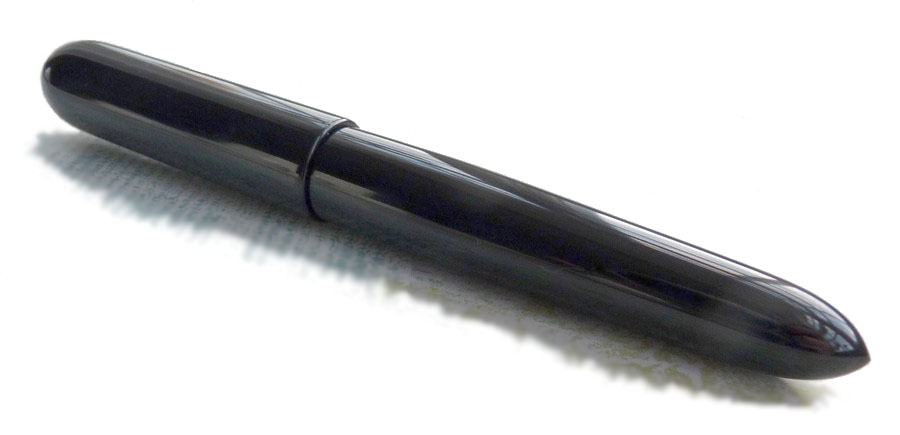 How it looks Like a pocket version of the Schienenzeppelin with a nib inside the engine bay, or a rapidly-extruded Airsteam, or, inevitably an alien mind-probe. It rather defies easy description, frankly, and it’s probably better to let the pictures do the talking on this occasion; suffice it to say that there is nothing else out there quite like it.
How it looks Like a pocket version of the Schienenzeppelin with a nib inside the engine bay, or a rapidly-extruded Airsteam, or, inevitably an alien mind-probe. It rather defies easy description, frankly, and it’s probably better to let the pictures do the talking on this occasion; suffice it to say that there is nothing else out there quite like it.
 How it feels It’s big – really extraordinarily big. So much so that you might wonder if your hands are big enough. Three-quarters of our reviewing panel were, however, pleasantly surprised to find that it nevertheless felt about right in the hand, and the lightness of the materials ensures that it’s not as heavy as it looks either. The ebonite makes it warm to the touch immediately, which is also rather pleasant. But it will be just a bit too big for some.
How it feels It’s big – really extraordinarily big. So much so that you might wonder if your hands are big enough. Three-quarters of our reviewing panel were, however, pleasantly surprised to find that it nevertheless felt about right in the hand, and the lightness of the materials ensures that it’s not as heavy as it looks either. The ebonite makes it warm to the touch immediately, which is also rather pleasant. But it will be just a bit too big for some.
How it fills With a simple Schmidt converter, and that’s perfectly reasonable. The lack of metal inside then barrel and the close threads probably means that eye-dropper conversion is also possible, if you don’t mind a few ink-burps as a result.
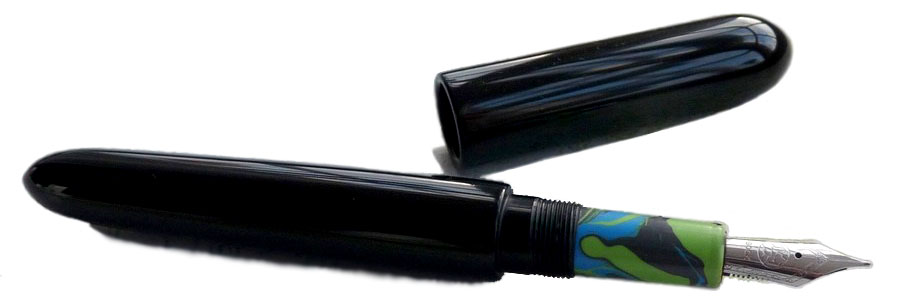 Crucially, how it writes… As ever with hand-made pens, that depends upon the nib you choose to add. Jake uses the Bock #6 steel nib as standard, and although the review unit we sampled had been bashed about a bit, to the detriment of writing performance in this case, Jake does test all nibs before dispatch to customers and will rectify any issues which arise after delivery. The writing position is comfortable and, with a #6 nib of your choice, this should be a very nice long-term scribbler.
Crucially, how it writes… As ever with hand-made pens, that depends upon the nib you choose to add. Jake uses the Bock #6 steel nib as standard, and although the review unit we sampled had been bashed about a bit, to the detriment of writing performance in this case, Jake does test all nibs before dispatch to customers and will rectify any issues which arise after delivery. The writing position is comfortable and, with a #6 nib of your choice, this should be a very nice long-term scribbler.
Pen! What is it good for? Let’s keep it clean, folks. It’s for writing – really, it is. Most of us would probably keep a pen this extravagantly outré for use at home, but it would certainly look the part signing big contracts… or peace treaties with extraterrestrial civilisations.
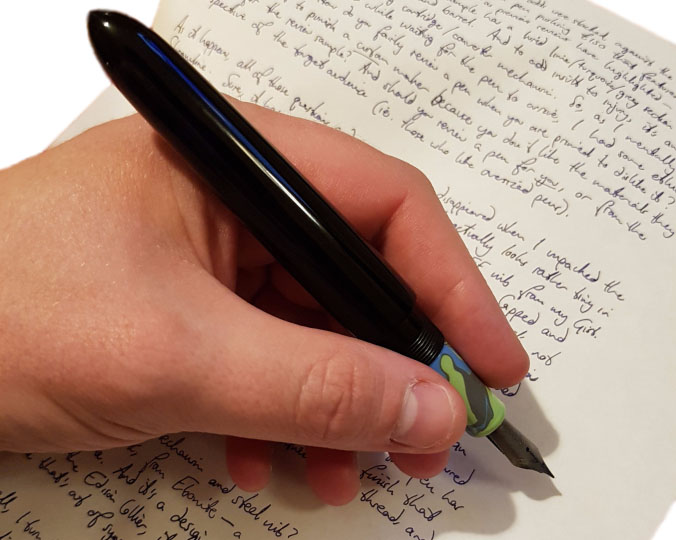 VFM Most versions of the Streamline are available at around the £150 mark, which we think is fair for a hand-made pen with unique design and plenty of customisation options. Installing a nib which is more exotic than the steel standard will naturally add to that, but it’s still a tempting proposition for most of us who reviewed it.
VFM Most versions of the Streamline are available at around the £150 mark, which we think is fair for a hand-made pen with unique design and plenty of customisation options. Installing a nib which is more exotic than the steel standard will naturally add to that, but it’s still a tempting proposition for most of us who reviewed it.
If this isn’t quite your cup of tea, but almost… The acrylic used in the section of this review sample wasn’t quite as popular as the ebonite of the main body, but that’s no real problem as there are copious alternative options – have a look at Jake’s Etsy page (link below) for a few ideas if you need them. If you like the unique design but just can’t handle something quite this huge, Jake does make some smaller pens too. We can’t think of any other pen maker turning out anything remotely comparable, though.
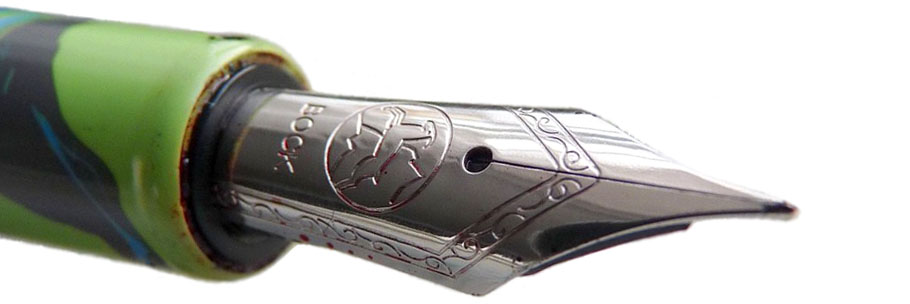 Our overall recommendation If you like big pens and you cannot lie, then make like Sir Inkalot to the website and order one; we were mightily impressed and several of us have started to muse about our own choice of materials one day. We’d like to see a version with a bigger #8 nib in the future too, but this is a pretty special pen which looks out of this world but is also very nice to wield.
Our overall recommendation If you like big pens and you cannot lie, then make like Sir Inkalot to the website and order one; we were mightily impressed and several of us have started to muse about our own choice of materials one day. We’d like to see a version with a bigger #8 nib in the future too, but this is a pretty special pen which looks out of this world but is also very nice to wield.
 Where to get hold of one From Jake’s Etsy page, or the outer rings of Saturn, whichever is closer to you.
Where to get hold of one From Jake’s Etsy page, or the outer rings of Saturn, whichever is closer to you.
This meta-review references:
 Thanks to Jake for supplying this extraordinary test sample, and offering one lucky reader the chance to take it home! The competition entailed ideas for favourite Welsh designers, with a very broad brief as to what ‘designer’ means. There were some wonderfully creative responses but the most surprising had to be the humble equals= sign. The prize is winging its way by flying saucer…
Thanks to Jake for supplying this extraordinary test sample, and offering one lucky reader the chance to take it home! The competition entailed ideas for favourite Welsh designers, with a very broad brief as to what ‘designer’ means. There were some wonderfully creative responses but the most surprising had to be the humble equals= sign. The prize is winging its way by flying saucer…

 How does a Lazzari design take shape? Here’s my little secret – I’m really a mechanical pencil fan. I’m told that’s safe enough to admit to in the stationery world, and I enjoy putting my original art skills to use. Looking at the preliminary sketches, you can see how the Streamline pen took shape. I do take commissions from customers too, but I’m always full of ideas anyway.
How does a Lazzari design take shape? Here’s my little secret – I’m really a mechanical pencil fan. I’m told that’s safe enough to admit to in the stationery world, and I enjoy putting my original art skills to use. Looking at the preliminary sketches, you can see how the Streamline pen took shape. I do take commissions from customers too, but I’m always full of ideas anyway.
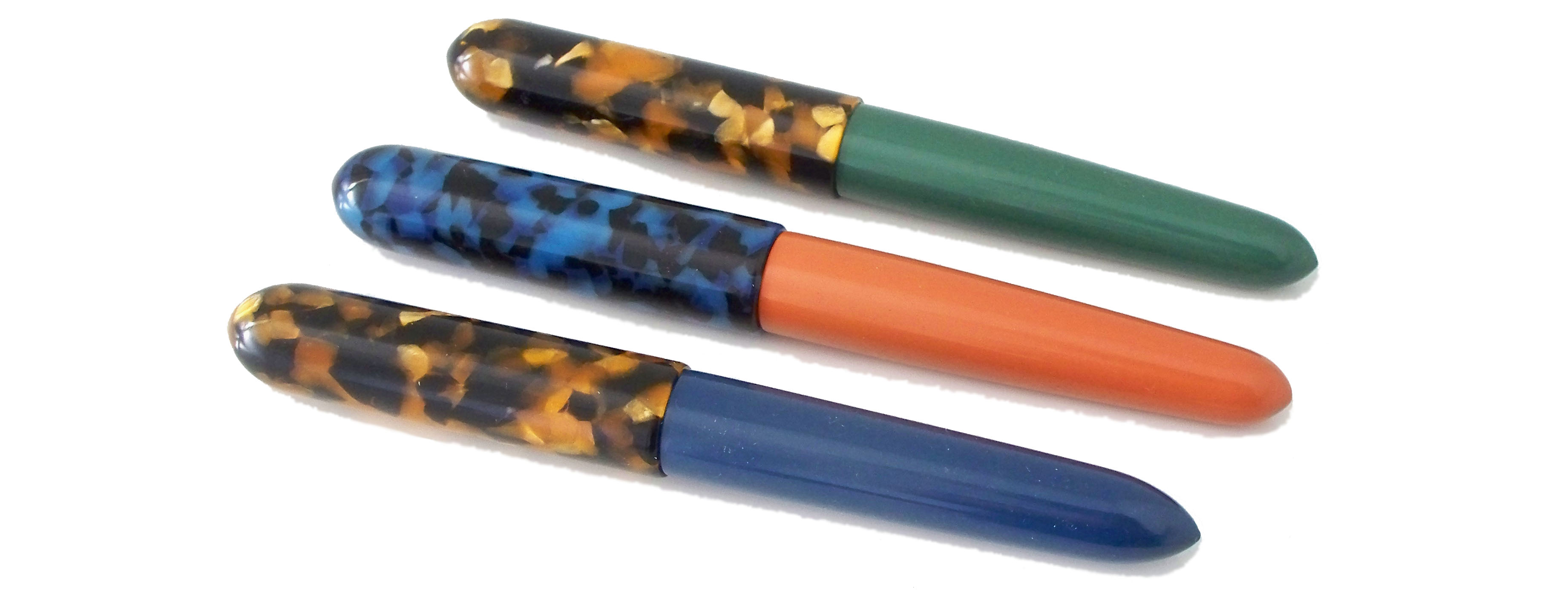
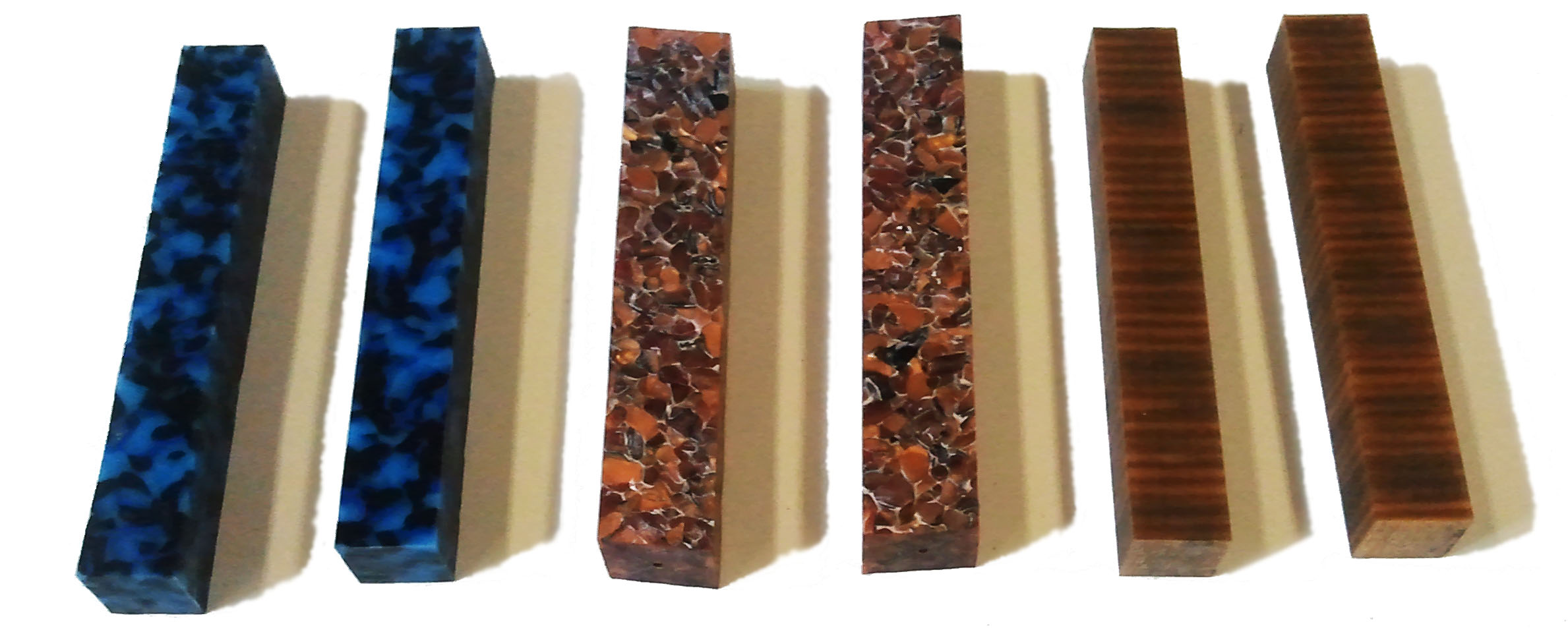

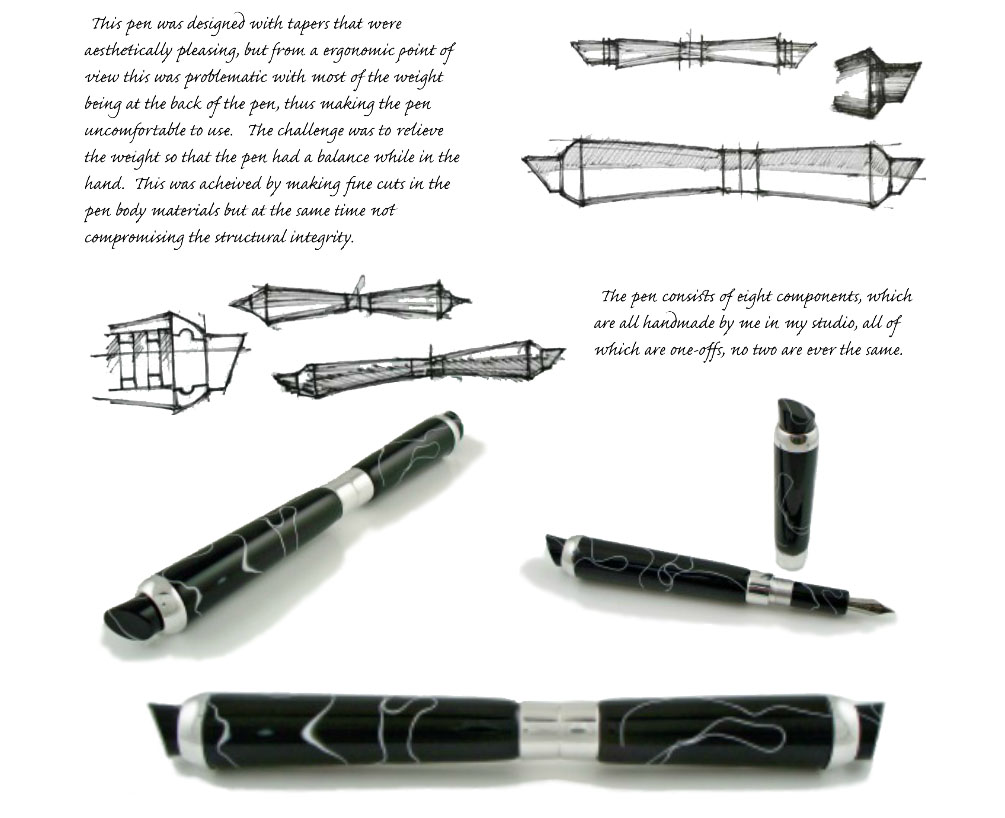
 How it looks The Silvine notebooks have been dye-matched to the 1960s bold red cover that we’ve all grown to love. With 300gsm front and back covers, the notebooks feel strong and durable; far more than many other softcover notebooks out there. There are several different sizes of notebooks, each with their own particular little niche. However, the one that stood out immediately to many of us is the Exercise as it is very similar to the wririting books familiar from school. However, not every aspect of the notebooks was loved across the Inkdom. In particular, Gillian felt the blue lines within the Exercise notebook as being a little over the top. While the red margin in the Exercise book was able to calm it down a little and provide a little bit of contrast, unfortunately the Memo notebook didn’t have that cover and wasn’t so easy on the eyes.
How it looks The Silvine notebooks have been dye-matched to the 1960s bold red cover that we’ve all grown to love. With 300gsm front and back covers, the notebooks feel strong and durable; far more than many other softcover notebooks out there. There are several different sizes of notebooks, each with their own particular little niche. However, the one that stood out immediately to many of us is the Exercise as it is very similar to the wririting books familiar from school. However, not every aspect of the notebooks was loved across the Inkdom. In particular, Gillian felt the blue lines within the Exercise notebook as being a little over the top. While the red margin in the Exercise book was able to calm it down a little and provide a little bit of contrast, unfortunately the Memo notebook didn’t have that cover and wasn’t so easy on the eyes.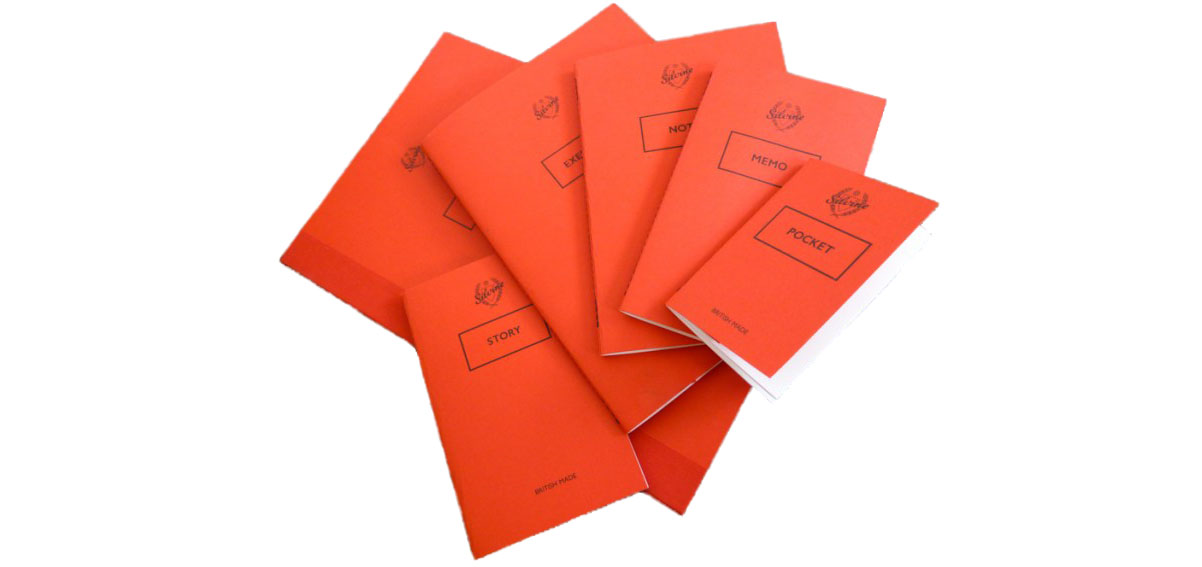 How it feels Everyone within the Inkdom commented on how textured the paper is. The paper is 90gsm Natural White Wave paper and you can definitely feel it on your pen. We actually rather liked this; it’s certainly not as smooth as Clairefontaine, but you can feel what you;’re doing as you move the nib across the paper. What’s more, this paper handles anything thrown at it. Gillian even mentioned that the paper might be able to hold up to watercolours! Dabiel and Scribble found that it was able to handle all the nibs that they threw at it and The Clumsy Penman also commented on how well the paper copes with inks.
How it feels Everyone within the Inkdom commented on how textured the paper is. The paper is 90gsm Natural White Wave paper and you can definitely feel it on your pen. We actually rather liked this; it’s certainly not as smooth as Clairefontaine, but you can feel what you;’re doing as you move the nib across the paper. What’s more, this paper handles anything thrown at it. Gillian even mentioned that the paper might be able to hold up to watercolours! Dabiel and Scribble found that it was able to handle all the nibs that they threw at it and The Clumsy Penman also commented on how well the paper copes with inks.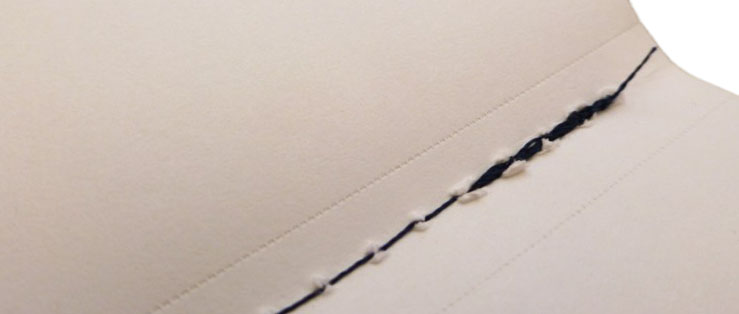 Crucially, how it handles… Pages in the Silvine notebooks are hand-stitched, which gives the notebooks a very personal feel and also means that they lay flat which makes the writing experience even more pleasurable. Some of us weren’t too keen on how the stitching looked, however, as it wasn’t always clean and could look a tad messy. The exception to this is the Project notebook, which has a little bit of extra protection because of how big and heavy it is (speaking in relative terms to the other sizes, such as the itty-bitty Pocket). All the notebooks have perforated pages and they work very well as you can easily tear out the pages if you need to, but you needn’t worry about the perforations becoming weak when flipping pages in the notebook – the pages will only come out if you want them to come out.
Crucially, how it handles… Pages in the Silvine notebooks are hand-stitched, which gives the notebooks a very personal feel and also means that they lay flat which makes the writing experience even more pleasurable. Some of us weren’t too keen on how the stitching looked, however, as it wasn’t always clean and could look a tad messy. The exception to this is the Project notebook, which has a little bit of extra protection because of how big and heavy it is (speaking in relative terms to the other sizes, such as the itty-bitty Pocket). All the notebooks have perforated pages and they work very well as you can easily tear out the pages if you need to, but you needn’t worry about the perforations becoming weak when flipping pages in the notebook – the pages will only come out if you want them to come out.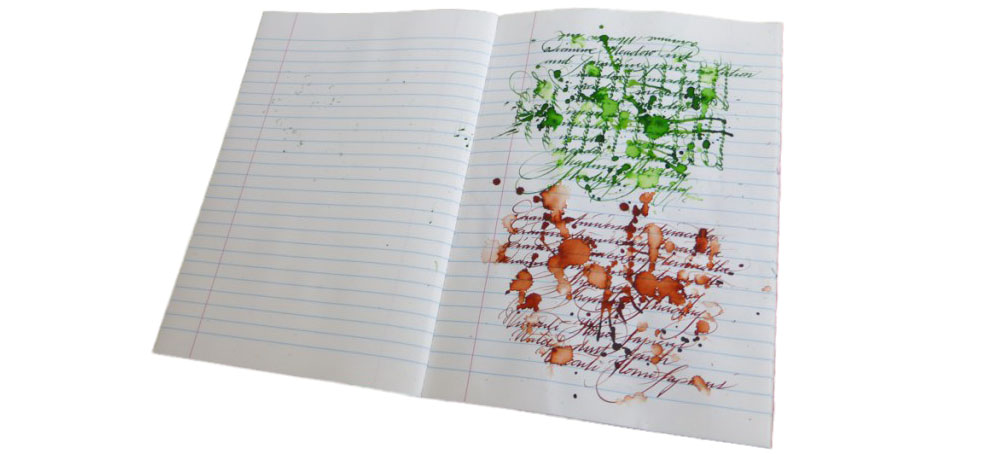 Pulp! What is it good for? As mentioned above, each notebook fills its own little niche. You can read our individual reviews to get a better sense for what you could use them for. Daniel was was able to use the Project notebook for drawing graphs for biology illustrations, but Gillian pointed out that it doesn’t have to just be for applications like drawing out scientific apparatus. You’re bound to find the right notebook for you amongst this selection; John has even made the Pocket part of his every day carry. Some of us did identify other limitations; there is no grid option and the notebooks are all a non-standard size.
Pulp! What is it good for? As mentioned above, each notebook fills its own little niche. You can read our individual reviews to get a better sense for what you could use them for. Daniel was was able to use the Project notebook for drawing graphs for biology illustrations, but Gillian pointed out that it doesn’t have to just be for applications like drawing out scientific apparatus. You’re bound to find the right notebook for you amongst this selection; John has even made the Pocket part of his every day carry. Some of us did identify other limitations; there is no grid option and the notebooks are all a non-standard size.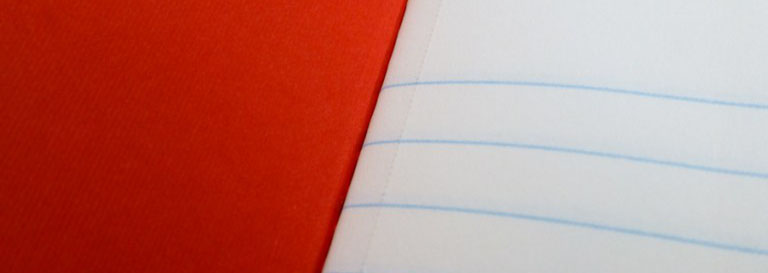 VFM Typically, the cheapest of these notebooks is the Memo, at around £4.50, with the most expensive around £14.00. However, if you consider the Pocket notebooks, which come in packs of three, the cost of each individual notebook is £2.17. John says that the notebooks are “expensive but worth it,” and that sums up the consensus view – you do pay a of a premium, but it’s worth it.
VFM Typically, the cheapest of these notebooks is the Memo, at around £4.50, with the most expensive around £14.00. However, if you consider the Pocket notebooks, which come in packs of three, the cost of each individual notebook is £2.17. John says that the notebooks are “expensive but worth it,” and that sums up the consensus view – you do pay a of a premium, but it’s worth it.